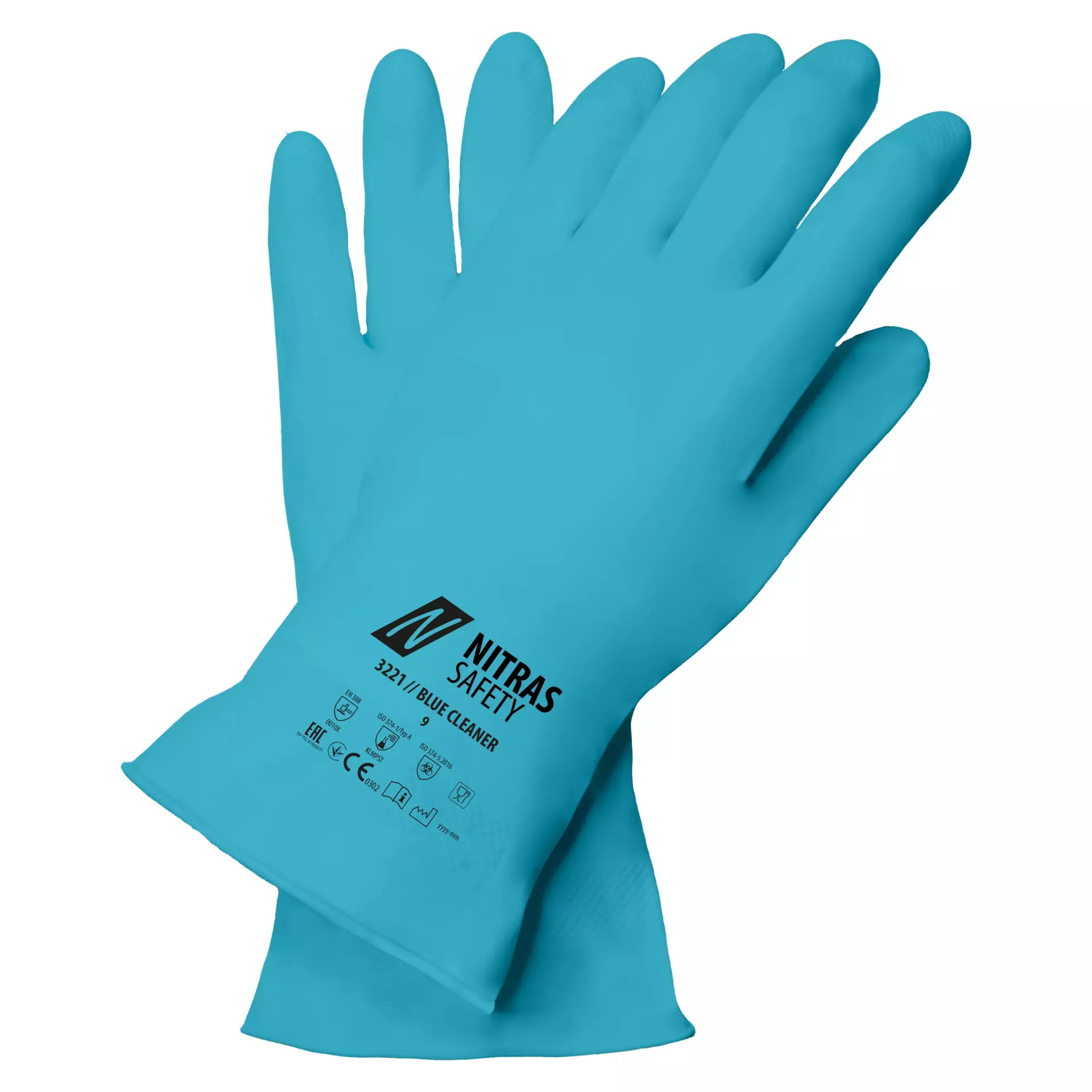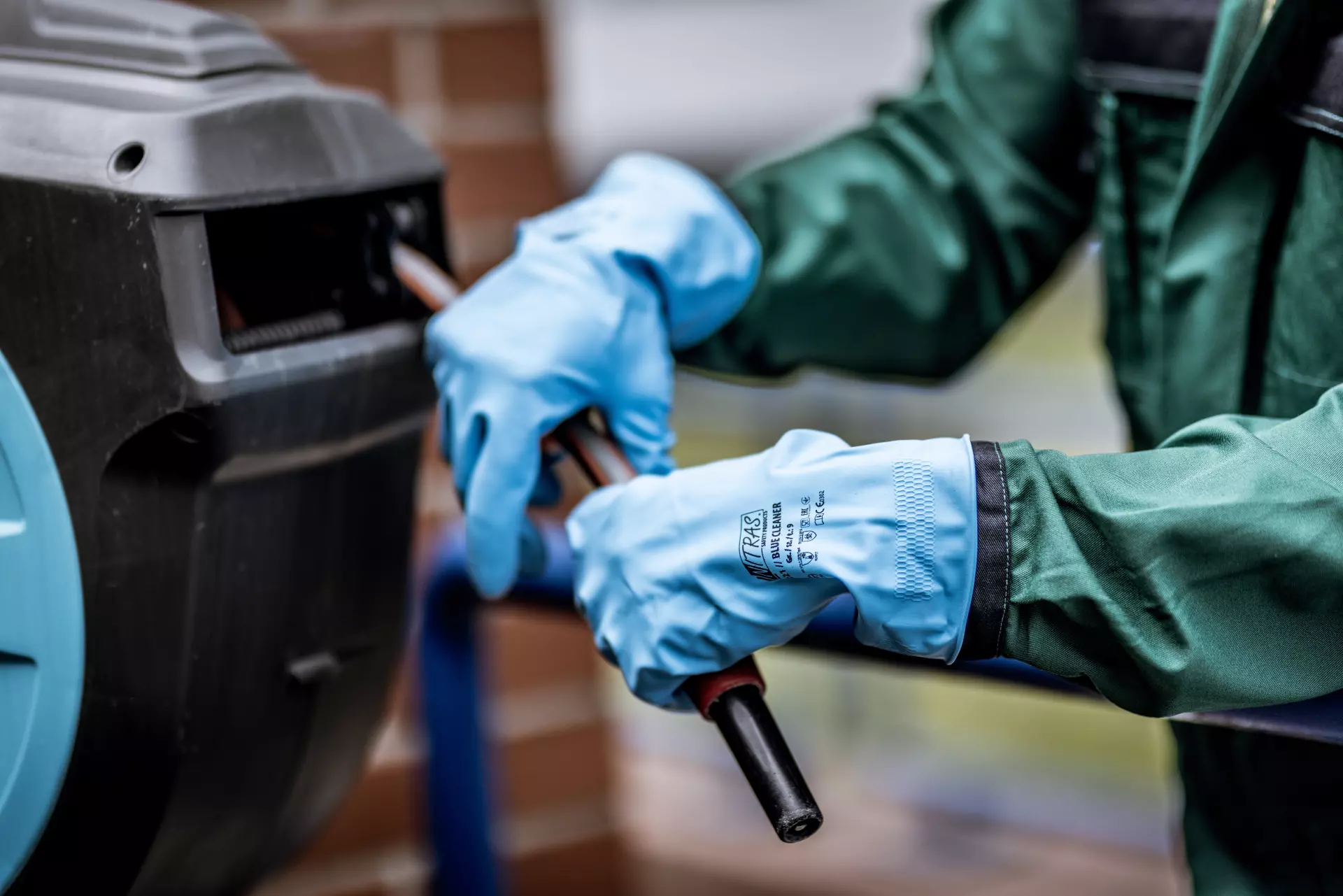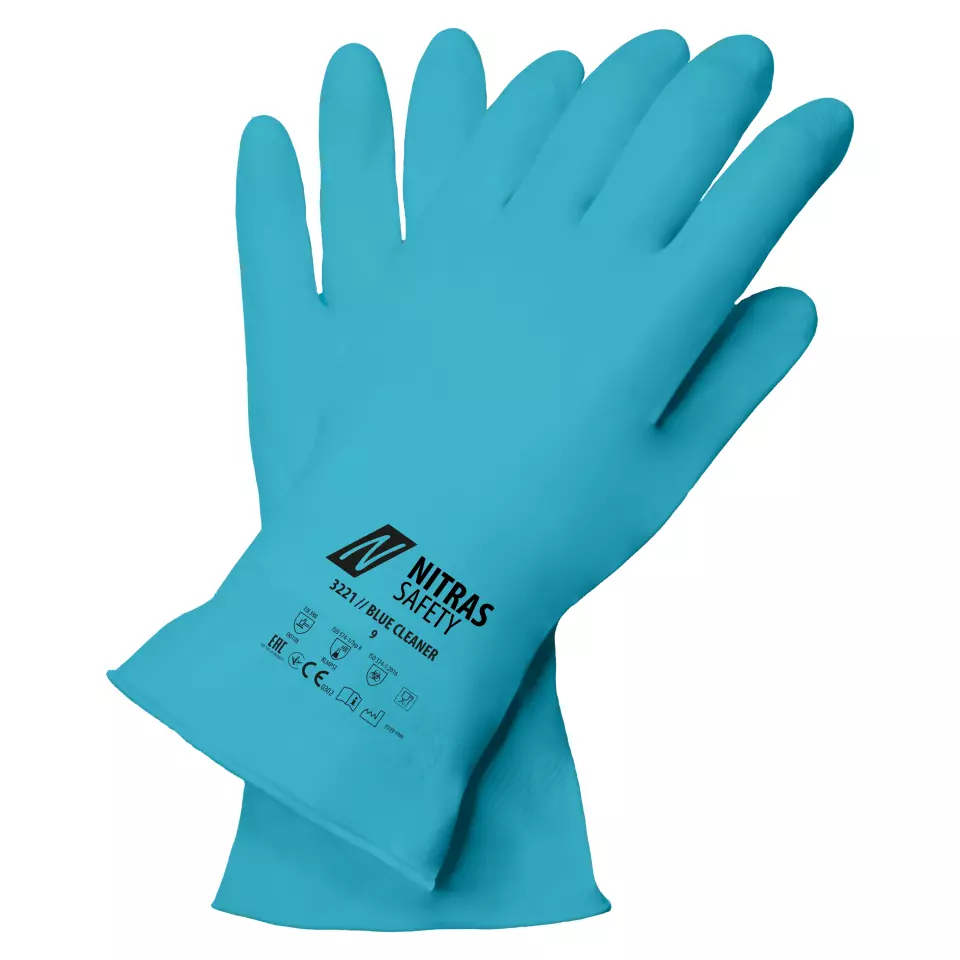

Features You'll Love

Cuff Style · Open
Determines how the glove secures around the wrist, affecting fit, protection from debris, and ease of putting gloves on and taking them off.
Nitras
BLUE CLEANER Chemical Protective Gloves, Blue, 12 pairs
BLUE CLEANER Chemical Protective Gloves, Blue, 12 pairs
4.9 / 5
18,56 €
Price per 12 pairs
1,55 € / pair
Choose size
Shipping fee is 7,95 € for orders under 80,00 €
Features You'll Love

Cuff Style · Open
Determines how the glove secures around the wrist, affecting fit, protection from debris, and ease of putting gloves on and taking them off.
Product description
These chemical protective gloves offer comprehensive protection against micro-organisms, bacteria, and various chemical substances while being suitable for food contact applications. The latex construction features a flock-lined interior for comfort and a 30cm length for extended coverage. With a uniform 0.3mm thickness throughout and maximum dexterity rating, these gloves provide optimal protection without compromising handling precision.
Product Features:
- Flock-lined interior for enhanced comfort
- 30cm length for extended protection
- Uniform 0.3mm thickness construction
- Maximum dexterity rating (Level 5)
- Food contact approved
Technical Details:
- Material: Latex construction
- Chemical resistance Type A certification
- Protection against micro-organisms and bacteria
- Penetration and permeation tested
Standards:
- EN 388:1010X for mechanical risks
- EN ISO 374-1:2016/Type A (KLMPST) for chemical protection
- ISO 374-5:2016 for micro-organism protection
- EN 420:2003 + A1:2009 (Dexterity Level 5)